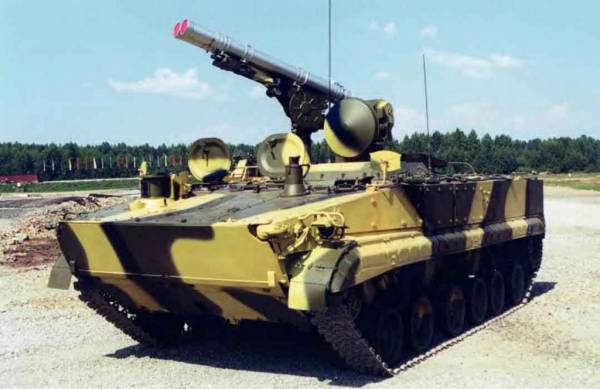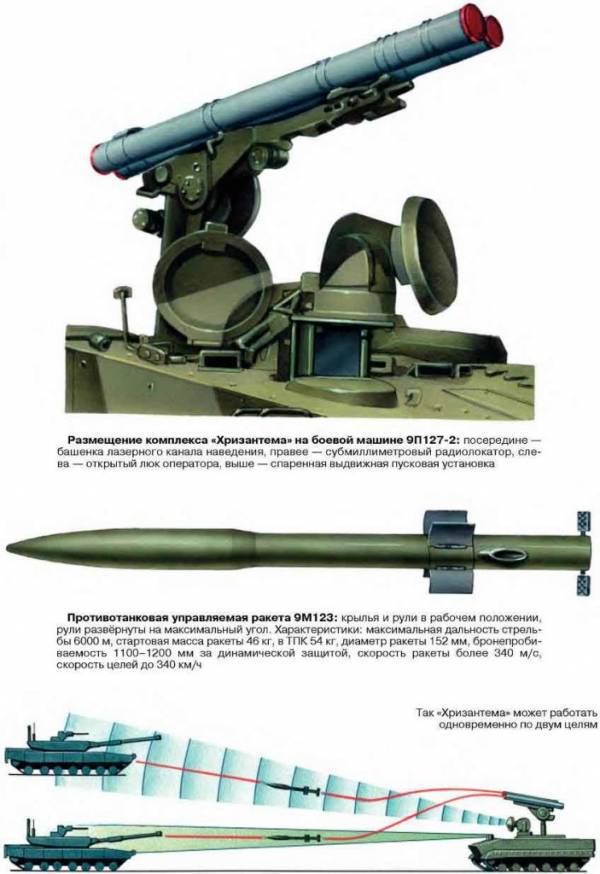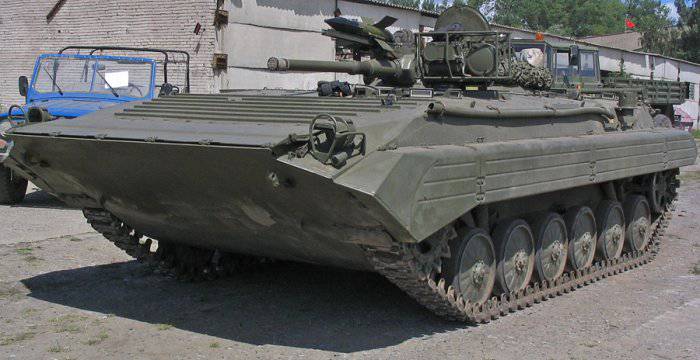ATGM "Chrysanthemum" the most powerful anti-tank weapons

The Chrysanthemum ATGM was developed on the personal instructions of the USSR Defense Minister Marshal Dmitry Ustinov and became the most powerful anti-tank in the world weapons.
... Actually, Sergei Pavlovich Invincible was going to make a completely different rocket.
“The system,” says the former general designer of the Kolomenskoye KBM, “should be conceived from the very beginning so that it does not become obsolete in 15 years, and after 25 is suitable for modernization!” Looking into the future, Invincible already 25 years ago was convinced that promising missile systems should hit Tanks from above, since, on the one hand, the missiles guaranteeing frontal armor are not very transportable, and on the other hand, it is physically impossible to protect the tank’s roof just as well ... But for such ATGMs, neither laser nor radio command, nor even wire control system, you needed something completely new. Sergei Pavlovich became even interested in telepathy, but the solution was eventually found in another area. However, only the principal, at the level of confirmation of the physical effect, was still very far from prototypes ...
But the work was interrupted at the very beginning.
In the summer of 1981, the shaft of the West-81 combined-arms exercises rolled through the Belarusian fields. The organizers overdid it with demonstrative shooting, and before the Minister of Defense DF Ustinov there was a real wall of dust and powder smoke. Dmitry Fyodorovich, however, this demonstration of firepower was not at all pleased: how on earth, on this battlefield, would laser guidance and target designation systems work, which, with his active participation, were widely implemented in all branches of the military?
The statements that there would not be so much dust in a real battle, the marshal (and the long-term leader of the defense industry) only angered, and Ustinov demanded to find a technical solution. It was entrusted to the Invincible ...

If it is urgent, the decision was one - radio control. But the transition from radio waves to a laser beam was not accidental: in addition to the compactness of the equipment and the inevitability of using high frequencies in radio navigation that are dangerous for their own, significantly shorter optical waves gave a smaller divergence of the control beam, which increased the accuracy of shooting. In order to preserve the accuracy characteristics, a transition to submillimeter waves was required, and there was simply no such equipment suitable for use in the ground forces in the USSR.
The complex still turned out to be heavy, portable. To improve the efficiency, it was decided to leave laser guidance in case of clear weather. This is how the world's first two-channel ATGM appeared.
The bench sample of the microwave channel started working already in 1984, but ... according to the test results, it had to be completely redone. The complex, called “Chrysanthemum”, reached the series only after 15 years.
So, anti-tank guided missile 9М123-2. Despite certain similar details, it is wrong to call it a continuation of the “Sturm” - only the lateral nozzles of the sustainer engine and the shape of the bearing wings are inherited. But the aerodynamic design is normal, the wings are at the center of mass, the steering wheels are behind, on the instrument compartment.
By the way, the rudders themselves (as usual, in the same plane; the maneuver plane is determined by the angle of rotation of the rocket rotating around the longitudinal axis) is a little-known national priority. They are made in the form of a lattice of thin supersonic profiles, standing across the air flow. This solution combines compactness in folded form (the rocket starts from TPK) and the highest aerodynamic efficiency in the working position. Lattice stabilizers have long been used on heavy ballistic missiles, and the rudders, along with the Chrysanthemum, appeared on the newest air-to-air missile P-77.
The instrument compartment became much more massive: it had to “trample down” the radio receiver, the laser receiver, and the steering gears. But in front of them there was no place, in fact, - the huge over-caliber warhead evokes respect only by its appearance! Tandem cumulative warhead rocket 9М123-2 punches 1,1 – 1,2 m armor FOR dynamic protection. And the 9М123Ф-2 is completed with a volume-detonating warhead (the very one that the not-so-competent “commentators” call a vacuum one).
Although the rocket of the new complex has greatly become smarter, the main thing remains in the 9P127-2 combat vehicle. The complex with a total mass of about 3 t is nominally mounted on the BMP-3 chassis (therefore, it can swim at a speed of 10 km / h and shoot from the water). The crew - two people: a driver and operator. On the chassis are placed automatic ammunition on 15 missiles, twin retractable launcher, control equipment.
In any weather, a radar with a retractable antenna operating in the 100 – 150 GHz band allows you to shoot at ground targets, moving at a speed of 10 – 60 km / h, airborne (up to 340 km / h), surface, radio-contrast stationary. For the first time, ATGM is fired automatically: the CAM complex detects a target with the given parameters, prepares a rocket, controls its flight ... The operator only needs to make a decision and press the “Start” button.
In conditions of good visibility (regardless of the level of illumination), you can use a laser channel. In this case, the guidance, as usual, is semi-automatic. The complex is capable, using different channels, to simultaneously shoot at two different targets: automatic radio beam conducts one rocket, the laser operator - the second.
Of course, the composition of the complex "Chrysanthemum" is not confined to combat vehicles. It includes the commander’s combat vehicle with reconnaissance equipment and data lines, control and testing machines for the installations themselves (9В945) and missiles (9В990), a simulator for the operators 9Ф852.
In principle, the "Chrysanthemum" can be placed on other types of chassis, mounted in the foundation of a bunker or put on a combat boat. Aviation option not developed.
In 1999, the most powerful anti-tank missile system in the world went into production and began to enter service with the Russian army. Despite the regular presentation of "Chrysanthemum" at all military-technical exhibitions of the last 15 years, there were no foreign shipments. And the ATGM, of which S.P. Invincible dreamed at the end of the 1970s, is still on paper in our country ...

Information